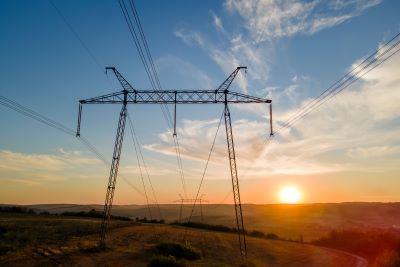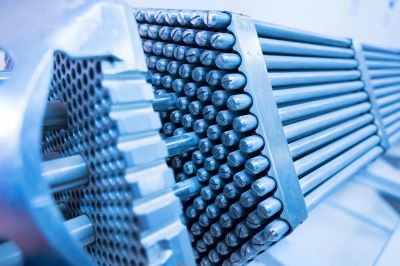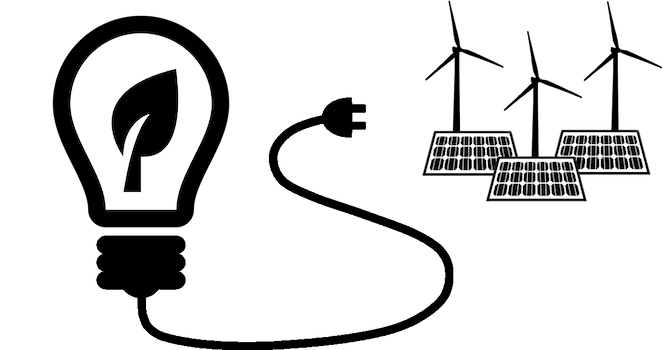Taking a close look at the benefits and risks of small modular reactors

Taking a close look at the benefits and risks of small modular reactors
(See also main story, “Debate intensifies over using reprocessed spent nuclear fuel in small modular reactors”).
How do proponents’ claims for the benefits of small modular reactors (SMRs) stack up against the historical record for small reactor development in Canada and the latest international scientific assessment of proposed SMRs?
Moltex Energy, a startup based in Saint John, N.B., plans to build a 300-megawatt SMR, called the Stable Salt Reactor Wasteburner, or SSR-W, at Point Lepreau, a cape on the Bay of Fundy.
The reactor would be coupled with Moltex’s process — called Waste to Stable Salts, or WATSS — for reprocessing, or recycling, spent nuclear fuel, which is considered as waste. The company intends to use about 160,000 spent fuel bundles — currently being stored onsite — originally used by the New Brunswick Power CANDU nuclear reactor operating there.
“We can recycle spent used nuclear fuel much simpler and easier than other people have tried to do it in the past,” Rory O’Sullivan, CEO of Moltex Energy, told Research Money.
The spent fuel could power Moltex’s reactor for 60 years, producing clean, emissions-free electricity, he said. In the unlikely case of an accident, O'Sullivan added, the reactor’s liquid molten salt fuel eliminates the possibility of a meltdown, “so that big hazard and the explosion of radioactive gas isn’t possible."
In addition, the SSR-W reactor addresses the problem of plutonium, which can be used to make nuclear bombs. “Through the reactor’s life, as we’re using the plutonium to make clean energy, it’s destroying the plutonium,” he said.
At the end of the reactor’s life, only a small amount of highly radioactive plutonium will remain in the reactor’s core, which can be permanently stored in Canada’s proposed deep geological repository. There will also be waste in the form of fission products, some of which are radioactive at what O'Sullivan called the “intermediate level” — a couple of hundred of years, compared with 300,000 years or more for the highly radioactive spent fuel produced by large conventional nuclear reactors.
He estimated the cost of developing Moltex’s reactor and fuel recycling facility at around $500 million. That amount does not include the cost of actual construction, which Moltex has also estimated, but not yet publicly released. The company has also calculated its reactor can produce electricity at competitive prices, as low as 6.5 cents per kilowatt-hour.
Moltex has received $50.5 million from the federal government and $10 million from the New Brunswick government to support development of the company’s SMR and fuel recycling technology. O’Sullivan said the funding is being used to conduct laboratory experiments on the WATSS fuel-recycling process, including tests with actual spent nuclear fuel, to ensure the chemical separation process is economical and that the different waste streams produced can be safely managed. Other work is underway in labs around the world to validate the SSR-W reactor design, including with computer modelling and lab-scale test rigs.
O’Sullivan said the plan is to first build the WATSS recycling facility and have it in operation by 2030 or 2031, to start producing fuel for the reactor. This will be followed in a few years by construction of the reactor itself.
Moltex last year announced a strategic partnership with SNC-Lavalin, which has extensive experience in Canada’s nuclear sector, and has agreed to support the development and deployment of Moltex’s nuclear technologies.
Nuclear fuel reprocessing versus conventional fuel
A 2021 report by the U.S.-based Union of Concerned Scientists, which assessed the safety and security risks of molten salt reactors, said the fuel used by such reactors poses unique safety issues. The report describes complex behaviour of the highly corrosive hot liquid fuel, which is difficult to model as it flows through a reactor system.
“If cooling is interrupted, the fuel can heat up and destroy a molten salt reactor in a matter of minutes,” stated the report.
In contrast with solid-fuel reactors, the reported noted, molten salt reactors “routinely release large quantities of gaseous fission products, which must be trapped and stored.".
The first SMR scheduled to be built in Canada, GE Hitachi Nuclear Energy’s BWRX-300, is taking a more conventional approach to its nuclear fuel. The Canada Infrastructure Bank has committed $970 million to this project, located at the site of Ontario Power Generation’s existing Darlington nuclear power plant, where it is expected to generate 300 MW of electricity. Like existing CANDU reactors and the majority of water-cooled reactors worldwide, the BWRX-300 will use low-enriched uranium fuel.
In March, the BWRX-300 became the first SMR technology to complete two phases of the Canadian Nuclear Safety Commission’s vendor design review process. The CNSC said that no fundamental barriers to licensing were identified in the review.
According to Lisa McBride, country leader of SMRs for GE-Hitachi, construction of the BWRX-300 is scheduled to be completed by late 2028. In a webinar presented by the Transition Accelerator, she indicated that a fleet of GE-Hitachi SMRs would be used by Ontario and Saskatchewan, with the spent fuel from these reactors subsequently going to Canada’s deep geological repository.
Canada’s track record on small nuclear reactors
More than 100 public interest, Indigenous, and civil society groups from across Canada are opposed to SMRs, maintaining that “next generation” nuclear reactors “are a dirty, dangerous distraction from tackling the climate crisis.”
Gordon Edwards, co-founder and president of the Canadian Coalition for Nuclear Responsibility, cited Canada's poor track record with smaller reactors, including a pair of research reactors called MAPLES. Constructed about two decades ago by Atomic Energy of Canada Ltd. (AECL), these were to be "the world’s first reactors dedicated exclusively to producing medical isotopes. Originally scheduled to start operating in 2000, they encountered major technical problems during commissioning, which ultimately led AECL to end their development in 2008.
“Neither one of them worked at all," said Edwards. "They were completely shelved because they had a fundamental safety problem."
AECL also designed a small reactor, called the SLOWPOKE Demonstration Reactor, for district heating at AECL’s Whiteshell nuclear research facility in Manitoba. However, the market for a district heating system based on the reactor did not materialize, and the proposed commercial reactor was never built.
Another small, 250-MW CANDU prototype reactor, called Gentilly 1, was built at the Gentilly Nuclear Station, on the south shore of the St. Lawrence River in Bécancour, Quebec. Marred by technical problems, the reactor recorded only 180 MW “on-power” days over seven years, and shut down in 1977.
“It can’t be taken as a foregone conclusion that these reactors are going to work, or that they’re going to meet their targets in terms of time or cost,” Edwards concluded.
Assessing the prospects for SMRs
A 2023 report, by the U.S. National Academies of Sciences, Engineering, and Medicine, looked at the merits and viability of different nuclear fuel cycles and technology operations and the waste aspects of advanced nuclear reactors. Among the report’s findings:
- implementing just a few of the most promising reactor concepts and their associated fuel cycles, at a large commercial scale, would require substantial government and industry investments well beyond 2050
- the costs of advanced reactors and their associated fuel cycles could range from at least several billion dollars — for pilot-scale, non-light water advanced reactors and their fuel cycle facilities — to hundreds of billions of dollars for full deployment of an alternative fuel cycle, replacing the existing, once-through cycle and existing light water reactors
- the introduction and use of advanced reactors will do little, if anything, to mitigate the need for successful management and disposal of nuclear waste
- most of the advanced reactor types proposed would generate waste streams for which there is little experience or mature technical ability to manage
- regardless of the fuel cycle, a geologic repository will be required to dispose of spent nuclear fuel, high-level wastes, and other wastes that contain long-lived radionuclides generated by reactor and fuel cycle operations
- fuel cycles involving reprocessing and separation of fissile material that could be used in weapons, pose greater proliferation and terrorism risks than the once-through uranium fuel cycle with direct disposal [in a geological repository] of spent fuel.
The costs of new nuclear power
A study last year by the Cato Institute, a U.S. think tank, looked at the economics of new nuclear power with a specific focus on SMRs.
“Based on recent construction costs in the U.S. and Europe and comparing the lifetime costs of a new nuclear power plant to a new natural gas plant, we found that the benefit of no carbon emissions from nuclear power was not large enough to offset its high construction costs,” said study authors David Kemp and Peter Van Doren.
The economic promise of SMRs, with their smaller, modular design and factory construction, is based on reducing construction costs through standardization and replication of components, allowing companies to reduce costs as more reactors are built.
But Kemp’s and Van Doren’s analysis “found the prospects for SMR cost reductions are largely reliant on a high rate of manufacturing (e.g. 5-10 reactors per year) and the factories and supply chains necessary for this mass production are not close to being in place.”
Dr. Daniel Kammen, PhD, a professor in the energy and public policy at the University of California Berkeley, and director of the Renewable and Appropriate Energy Laboratory, expressed his concern about the economics and back-end of SMRs’ nuclear fuel cycle, which includes refuelling the reactors and managing spent nuclear fuel.
According to a study last year published in the Proceedings of the National Academy of Sciences, few studies have assessed this challenge. “SMRs will produce more voluminous and chemically/physically reactive waste than light water reactors, which will impact options for the management and disposal of this waste,” said the study.
According to Kammen, “You really can’t know about the economics and the risks until you’ve done a couple of cycles of that back end fuel management and costs."
Even if some initial pilot SMRs do become operational by the end of 2030, it won’t be until the mid-2030s, at the earliest, when data are available on the back-end fuel management and costs, he said.
Nevertheless, John Gorman, president and CEO of the Canadian Nuclear Association, pointed to a need for new nuclear power as the country drives to net-zero emissions by 2050.
“We just cannot make it in certain regions of this country to a net-zero future, without significant amounts of new nuclear, combined with other energy sources like renewables,” he told Research Money. “We need all of these technologies that are scaling up, whether it’s long-term [energy] storage or small modular reactors or hydrogen or carbon capture and storage, to be able to meet this challenge in the future."
However, former U.S. nuclear regulator Dr. Allison Macfarlane, PhD, now at the University of British Columbia, does not see new nuclear power plants, including SMRs, as the solution to climate change.
“We can’t build these plants fast enough. They cost too much money, they take a really long time to build,” she said in an interview.
Existing nuclear power plants should be allowed to continue operating, Macfarlane said. “But the ‘new nuclear’ is not the solution in the next 20 years.”
R$
Events For Leaders in
Science, Tech, Innovation, and Policy
Discuss and learn from those in the know at our virtual and in-person events.
See Upcoming Events
You have 0 free articles remaining.
Don't miss out - start your free trial today.
Start your FREE trial Already a member? Log in
By using this website, you agree to our use of cookies. We use cookies to provide you with a great experience and to help our website run effectively in accordance with our Privacy Policy and Terms of Service.





